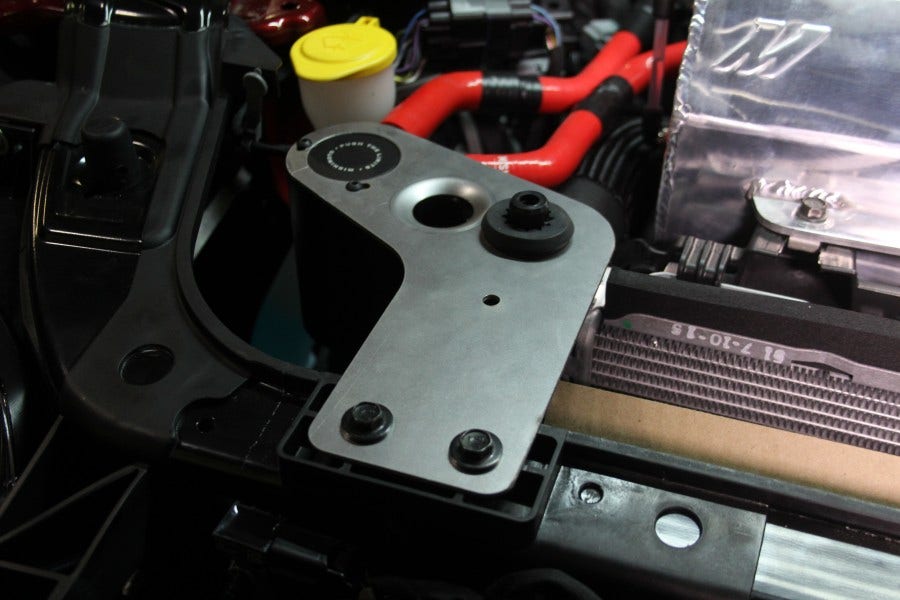
Keep oil out of your intake - Oil Catch Can R&D, Part 3: Test Results
In our last two posts we took a look at the prototype catch can brackets and hoses for both the driver and passenger-side. As a recap and to better explain our results, the next paragraph describes the crank case ventilation systems on the Mustang GT. If you're not in a reading mood feel free to continue to the results below.
Crank Case Ventilation on the Mustang GT
While we can continue to refer to the two catch can systems as the driver and the passenger-side, we can also differentiate them another way. This will allow us to better understand the results of our testing. The passenger-side catch can is tapped into the ventilation line that allows crankcase air (and blow-by) to exit the engine. We often call this the positive crankcase ventilation, or PCV line. This line is equipped with a valve, referred to as the PCV valve, which works to regulate the air flowing through the crank case ventilation (CCV) system. The driver-side catch can is tapped into a simpler breather line referred to as the makeup air line. This line allows air to enter the engine to "makeup" for the air exiting the engine through the PCV line. In most systems the PCV line is known to have the majority of blow-by travel through it, where blow-by in the makeup air line is minimal if at all. If you want to dive more in depth, check out our complete write up on Blow-By 101. Alright, back to your regular scheduled post!
Second Prototype Brackets
Since our last post, we decided to spice up our original bracket design using our dimple die press. Check out some photos of the press in action!
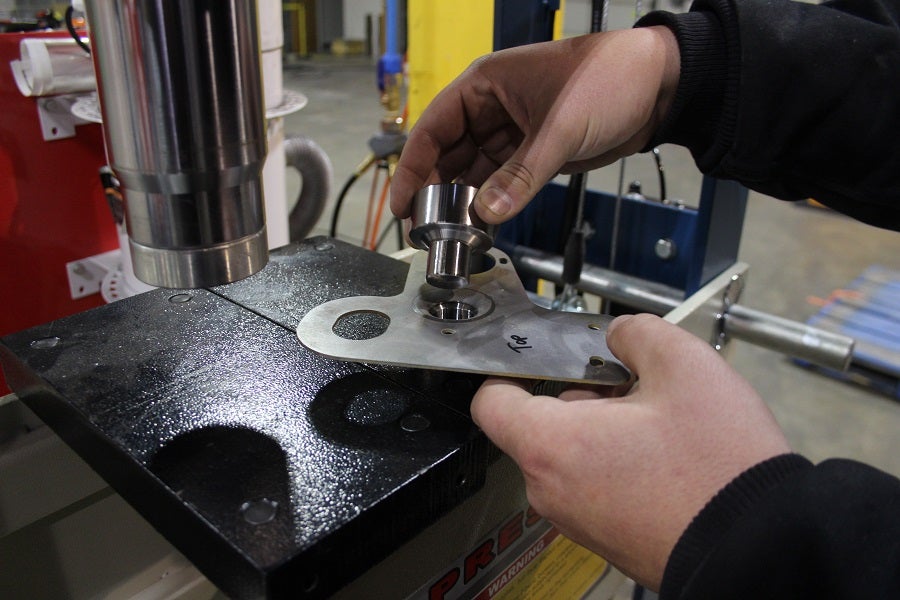 Mustang catch can bracket on the dimple-die press
Mustang catch can bracket on the dimple-die press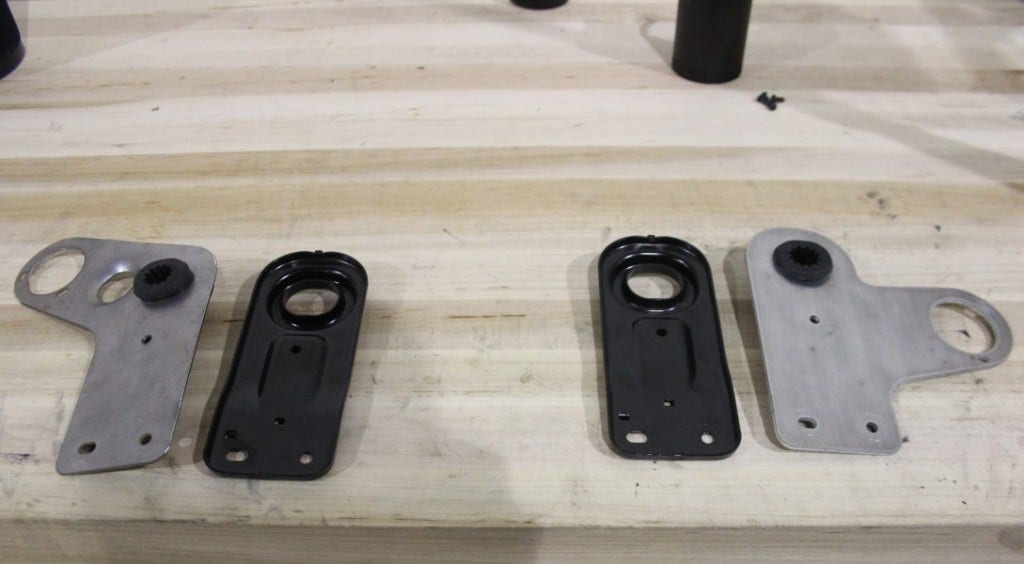 Mustang catch can brackets with the stock radiator stays
Mustang catch can brackets with the stock radiator staysOur final design will feature a single dimple in each bracket. We think it adds a nice touch to the overall look, but that is only one benefit. The dimple in each bracket shown below adds strength by reducing the amount that the bracket can flex. That's what we like to call a win-win.
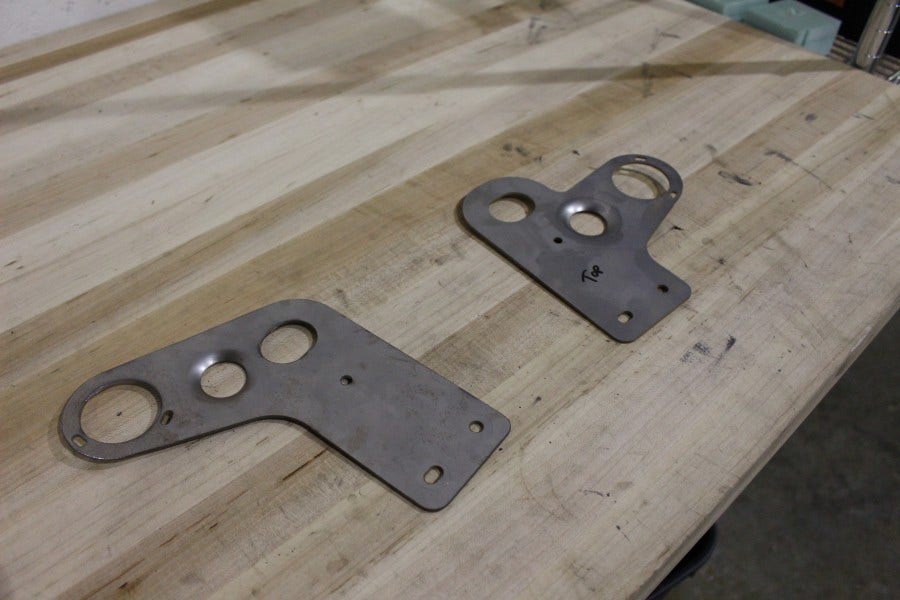 Mustang catch can brackets
Mustang catch can brackets Mustang catch can bracket installed with other Mustang parts
Mustang catch can bracket installed with other Mustang parts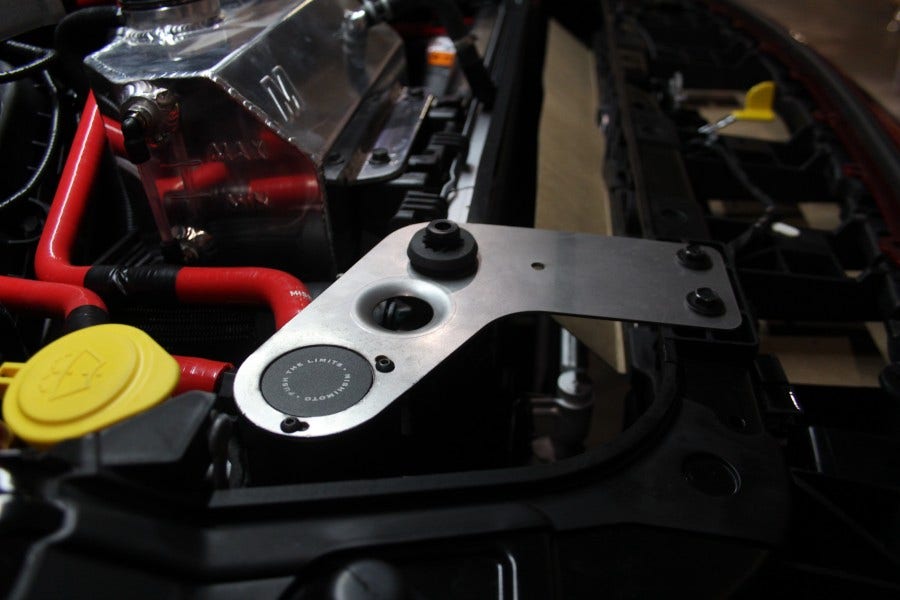 Mustang catch can bracket installed with other Mustang parts
Mustang catch can bracket installed with other Mustang parts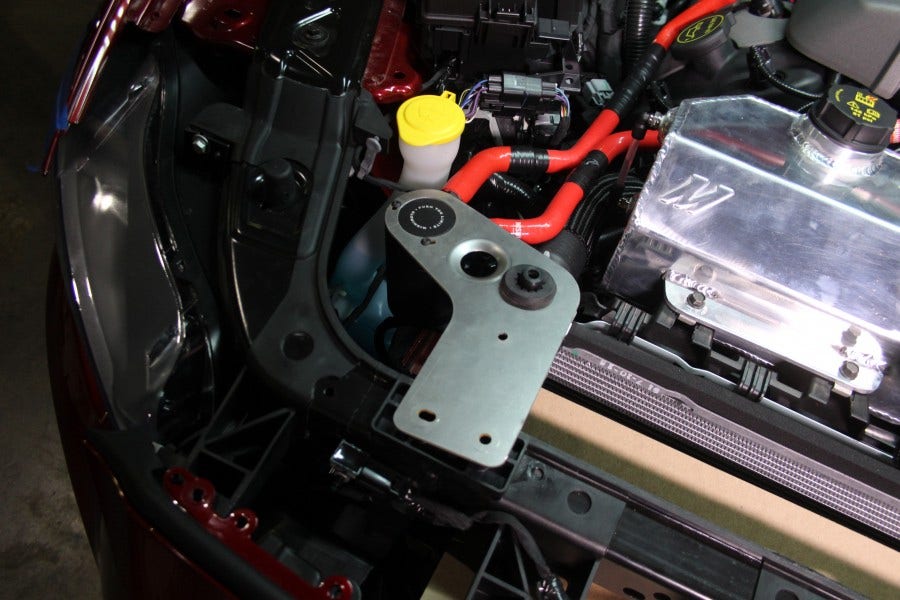 Mustang catch can bracket installed with other Mustang parts
Mustang catch can bracket installed with other Mustang partsAfter we had functional prototypes we began the fun part: testing. We decided to test both the driver-side and passenger-side catch can systems over the course of 1000 miles. Many have reported that the driver-side catch can doesn't accumulate much fluid, which is the case for many makeup air line systems. Still, we are curious to see the results for ourselves. Let's first take a look at the passenger-side catch can results.
Test Results: Passenger-side
After approximately 1000 miles on our brand new GT, we removed the passenger-side catch can and bracket to examine the amount trapped in the can. After removal, we could already see a good amount of oil and contaminants coating the baffle and collecting in the bottom of the can.
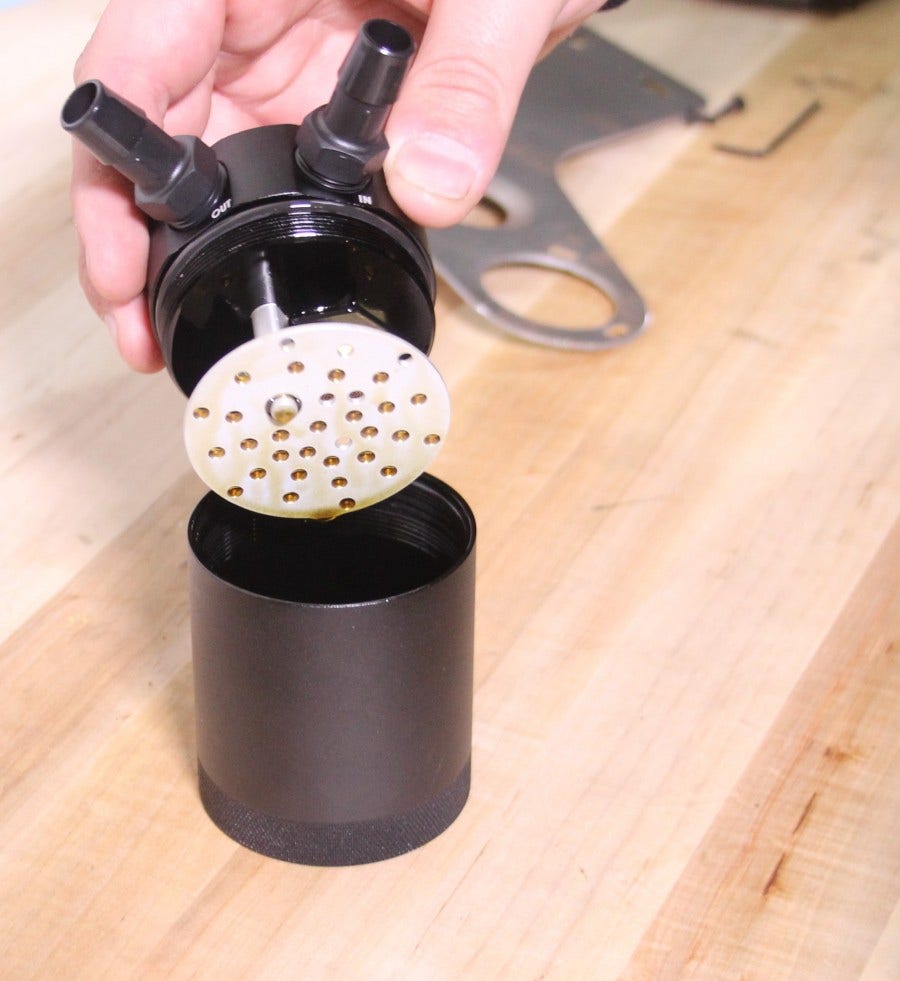 Mustang catch can with blow-by
Mustang catch can with blow-byIn order to report more accurate amounts of blow- by, we measured our results in this 50 ml beaker. Looks like we finally found a use for those beakers in chemistry class!
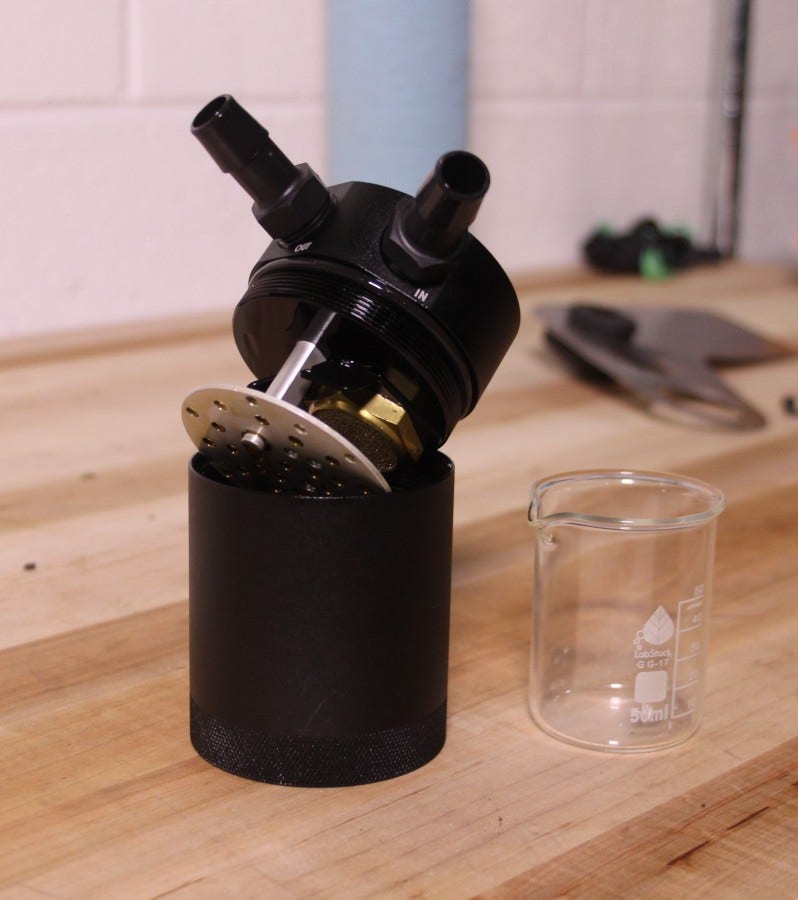 Mustang parts testing
Mustang parts testing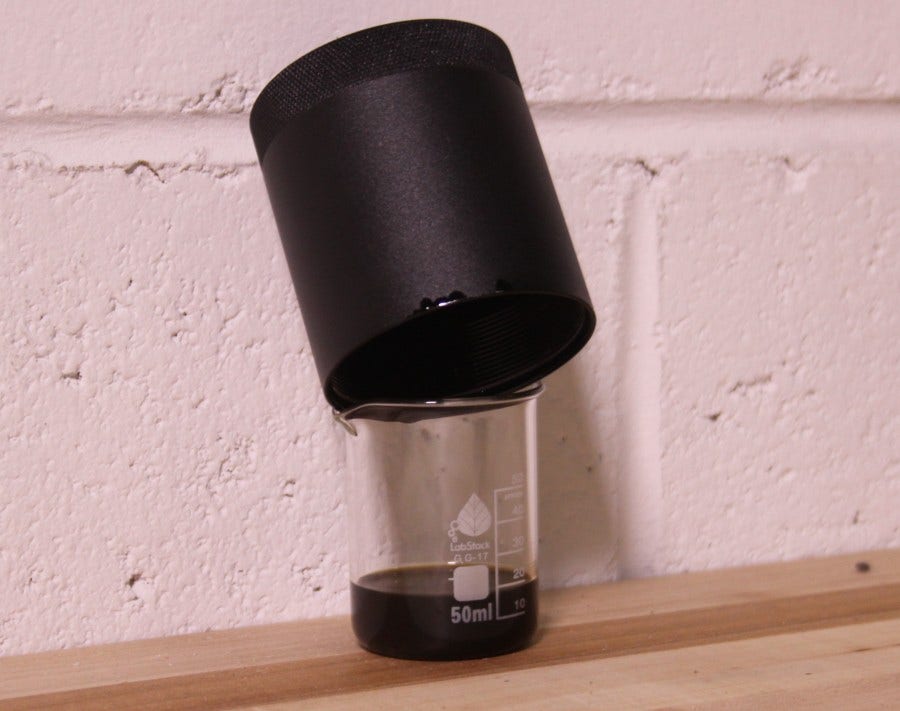 Mustang parts testing results
Mustang parts testing resultsAfter allowing the catch can to drain for a bit to coax the majority of oil out, we had about 20 ml. This roughly translates to 0.68 ounces, which is a little over 1/3 of the capacity of the catch can. The results are in; the passenger-side catch can is doing its job and doing it well! It is interesting to see the exact amount of oil and contaminants caught, which otherwise would have gone straight back into the intake. The passenger-side catch can is shaping up to be an important modification for preventative maintenance.
Test Results: Driver-side
Similar to the passenger-side, we removed the driver-side catch can and bracket to view the results after 1000 miles. Take a look at the results below!
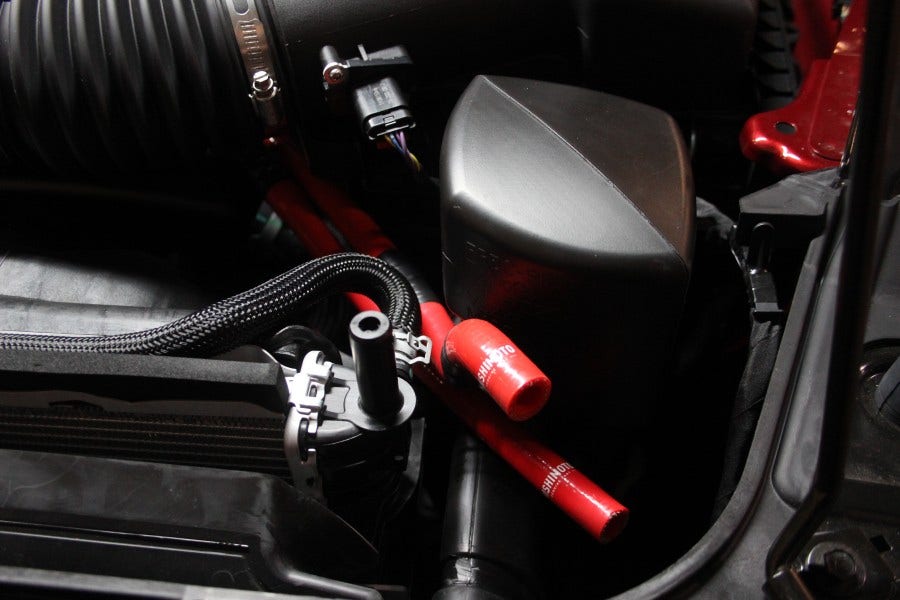 Mustang catch can hoses in relation to other Mustang parts
Mustang catch can hoses in relation to other Mustang parts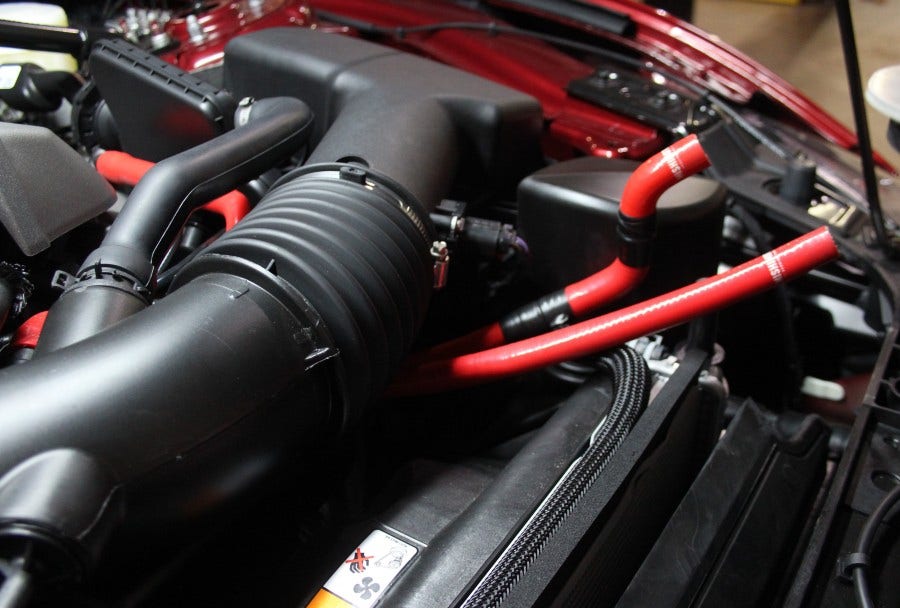 Mustang catch can hoses in relation to other Mustang parts
Mustang catch can hoses in relation to other Mustang parts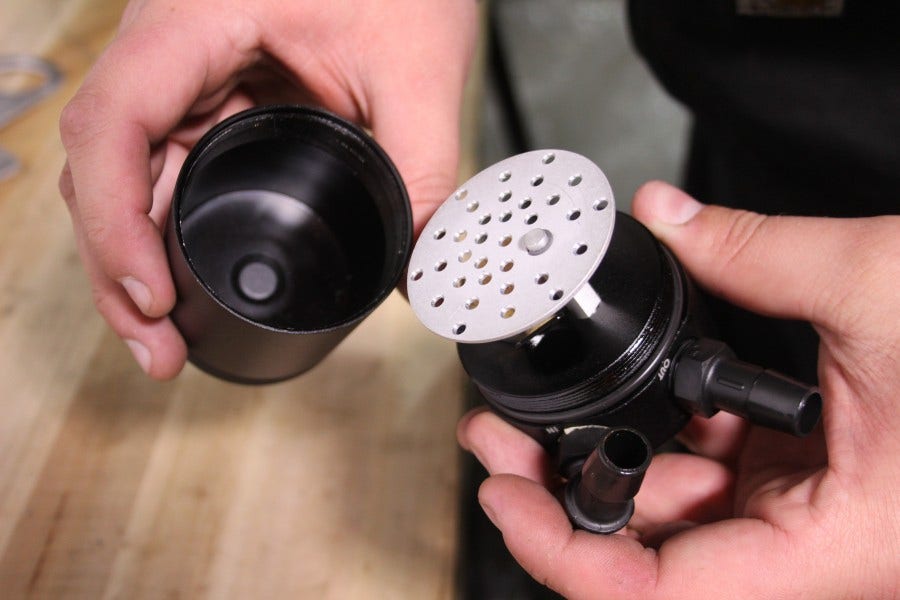 Mustang catch can test results
Mustang catch can test resultsWell we won't need our beaker here! While it wasn't a shock that the driver-side catch can was empty, it was a shock exactly how empty. There was not even a coating of oil on the inside of the catch can or the baffle. Given our findings, we have decided to hold-off on this particular side of the system unless the results change over time. For now, we will be working to finalize and release the passenger-side kit.
Coming Up
Now that we have completed testing we can begin production on our passenger-side catch can. This means a pre-sale! We will be offering this catch can kit at a discounted rate to everyone following our progress here on the forum. Stay tuned for updates on this and other Mustang parts in progress!
Thanks for reading!
-Sara




